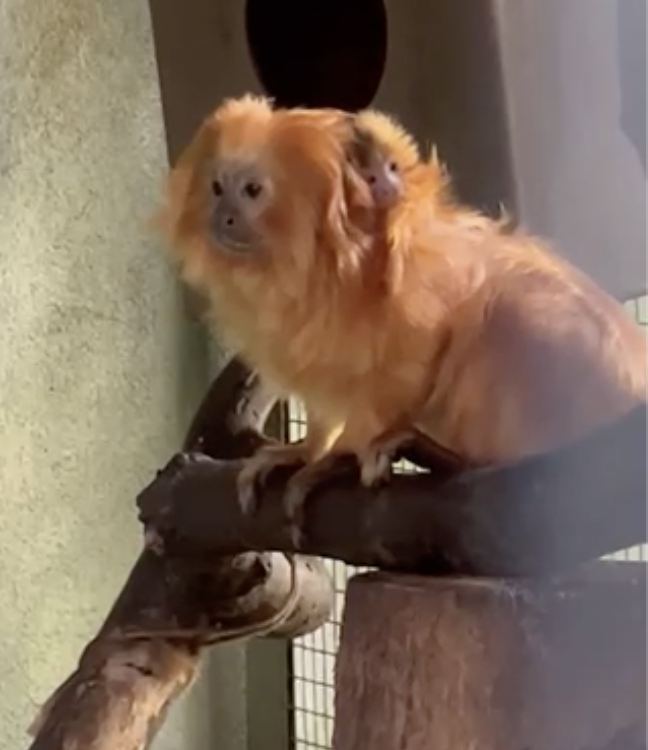
Connecticut’s Beardsley Zoo is happy to announce that a baby golden lion tamarin was born to mother Cricket and father Leão earlier this month.
Born fully furred with its eyes open, the baby will spend its first weeks clinging to its mother or father’s back. The adult male usually does the largest share of caretaking, with the mother taking the infant only for nursing. Guests in the Rainforest Building may see the baby clinging to its mother’s or father’s back, but the family has free access both to their main habitat in the Rainforest Building and to their inside habitat, so they may not be visible all the time.
After about five weeks, infants begin to explore on their own but will nurse for 90 days. A small endangered species of monkey from the Brazilian rainforests, often referred to as “GLTs”, these tiny monkeys weigh about one to one and a half pounds and are roughly ten inches tall as adults. The Zoo last had golden lion tamarin babies born in 2006 and again in 2007.
Found only in southeast Brazil, the golden lion tamarin is threatened by collection for the pet trade, habitat loss and habitat fragmentation. While protection of the species has resulted in an increase in their numbers, they are still classified as endangered. Their forest habitat has been reduced to only two percent of its original area, with habitats fragmented into unconnected areas, each supporting only a small group of monkeys. Deforestation has been ongoing for centuries to make way for sugar cane and coffee production, cattle grazing, logging, charcoal and urbanization.
“This new baby is an important part of the Association of Zoos and Aquariums (AZA)’s Species Survival Plan (SSP), helping to preserve golden lion tamarins for future generations,” he said. “All species raised in human care in accredited zoos are important ambassadors, raising awareness of habitat protection and contributing to the survival of their species.”
About Golden Lion Tamarins:
Considered the most beautiful of the four tamarin species, the golden lion tamarin (Leontopithecus rosalia) is named for the thick mane of hair around their necks, reminiscent of the great cats of Africa. Golden lion tamarins live primarily in the trees. They sleep in hollows at night and forage by day while traveling from branch to branch. Once down to 200 individuals in the wild and on the brink of extinction, intensive conservation efforts helped the population recover.